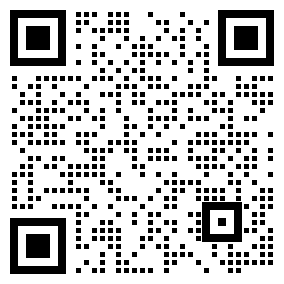Coupling technology is widely applied in fields such as electronics, communications, and optics, mainly used to achieve signal transmission, energy transfer, or information sharing between different parts in a system. The fundamental principle of coupling is to transfer signals or energy from one system to another through some physical or electromagnetic means without the need for direct electrical connections. Different coupling methods are suitable for different application scenarios.
Ⅰ、The basic principle of coupling technology
The basic principle of coupling technology relies on the transmission of signals, energy or information through physical media or space. In the fields of electronics and communications, coupling is mainly achieved through electromagnetic fields (such as electric fields and magnetic fields) or optical media (such as optical fibers). Its basic concepts can be summarized in the following ways:
Electrical coupling: The transfer of energy or signals between circuits through electric fields or currents. Electrical coupling is usually achieved through components such as transformers and coupling capacitors.
Magnetic coupling: Transferring energy or signals between different circuits through a magnetic field. A transformer is a typical magnetic coupling component that transmits signals or energy through the principle of electromagnetic induction.
Optical coupling: Transmitting information between different systems through optical signals. Common optical coupling components include optical fibers, lasers, etc., which are suitable for high-speed and long-distance signal transmission.
Mechanical coupling: The transmission of force or motion is achieved through physical media such as springs, rods, etc.
Ⅱ、Classification of coupling technology
Coupling technology can be classified according to different application fields, signal transmission methods and coupling media, etc. The following are several common coupling methods:
2.1. Electrical Coupling
Electrical coupling transmits signals through electric fields or currents and is often used in electronic circuits and communication systems.
Capacitive coupling: It uses capacitors to transmit signals without directly connecting two circuits. Capacitive coupling is often used in amplifier circuits, audio equipment, etc.
Inductive coupling: Signal coupling through inductive components, commonly seen in transformers and the transmission of radio signals.
Transformer coupling: It uses a transformer to achieve voltage conversion and signal transmission, and is widely applied in power isolation, impedance matching and other scenarios.
2.2. Magnetic Coupling
Magnetic coupling uses magnetic fields to transfer energy or signals. Through electromagnetic induction, magnetic coupling can transfer energy without direct electrical connection and is usually used in power transmission and circuit isolation.
Transformer: Transmits signals or energy by using a magnetic field. Transformers are used in power systems for voltage increase and decrease as well as signal transmission.
Wireless electromagnetic coupling: Transmitting signals through radio waves, it is often used in wireless communication and sensor networks.
2.3. Optical Coupling
Optical coupling technology transmits information between systems through optical signals and is often used in fields such as optical fiber communication and laser communication.
Optical fiber coupling: It uses optical fibers to transmit information and is suitable for long-distance and high-speed signal transmission, such as the Internet and television signals.
Laser coupling: The use of lasers for signal transmission, commonly seen in applications such as wireless optical communication and lidar.
2.4. Acoustic Coupling
Acoustic coupling transmits signals through sound waves or ultrasonic waves and is often used in medical, detection and acoustic applications.
Ultrasonic coupling: In the medical field, ultrasonic waves are used for image transmission and measurement, such as ultrasonic imaging and flaw detection equipment.
Acoustic wave sensors: Acoustic wave coupling is also applied in sensors and detection equipment, using the propagation characteristics of sound waves to detect changes in substances or media.
2.5. Mechanical Coupling
Mechanical coupling transfers mechanical energy or motion to another system through physical connections such as springs and rods.
Gear coupling: It achieves the transmission of mechanical energy through the meshing of gears and is widely used in transmission systems and mechanical devices.
Spring coupling: It transmits vibration or motion through spring elements and is often used in scenarios such as shock absorption and vibration control.
Ⅲ、The application of coupling technology
Coupling technology is widely applied in many fields:
Communication systems: Optical fiber communication, wireless communication, television signal transmission, etc. require efficient signal transmission. Commonly used technologies include optical coupling, electrical coupling, and wireless electromagnetic coupling.
Power systems: Power isolation, signal transmission and power conversion often rely on transformers, inductive coupling and capacitive coupling technologies.
Medical equipment: Ultrasonic coupling is used for imaging, diagnosis and sensor applications.
Mechanical control: Gears, springs and other mechanical coupling devices are used for transmission, vibration control and power transmission.
免责声明: 本文章转自其它平台,并不代表本站观点及立场。若有侵权或异议,请联系我们删除。谢谢! Disclaimer: This article is reproduced from other platforms and does not represent the views or positions of this website. If there is any infringement or objection, please contact us to delete it. thank you! |


